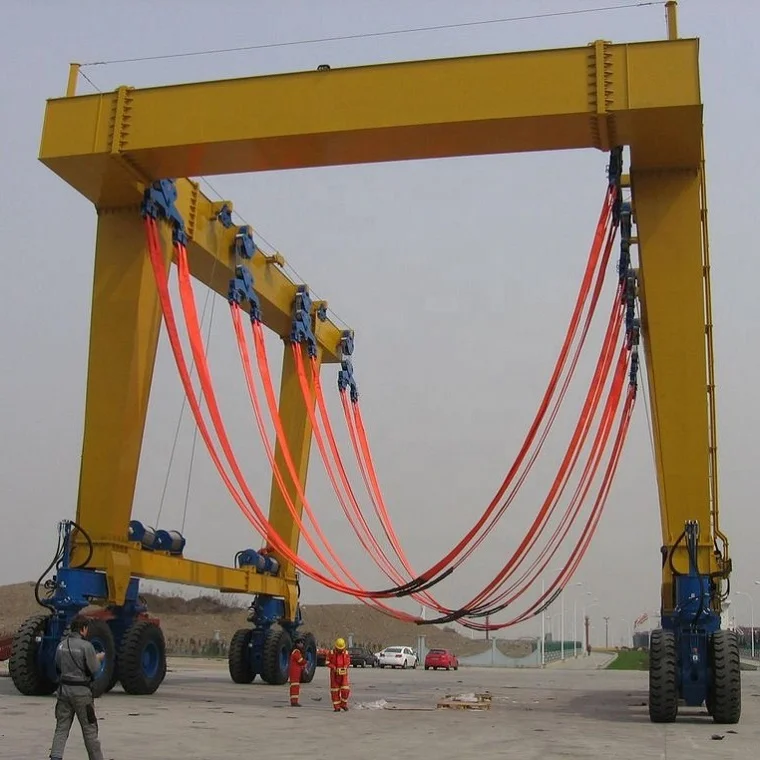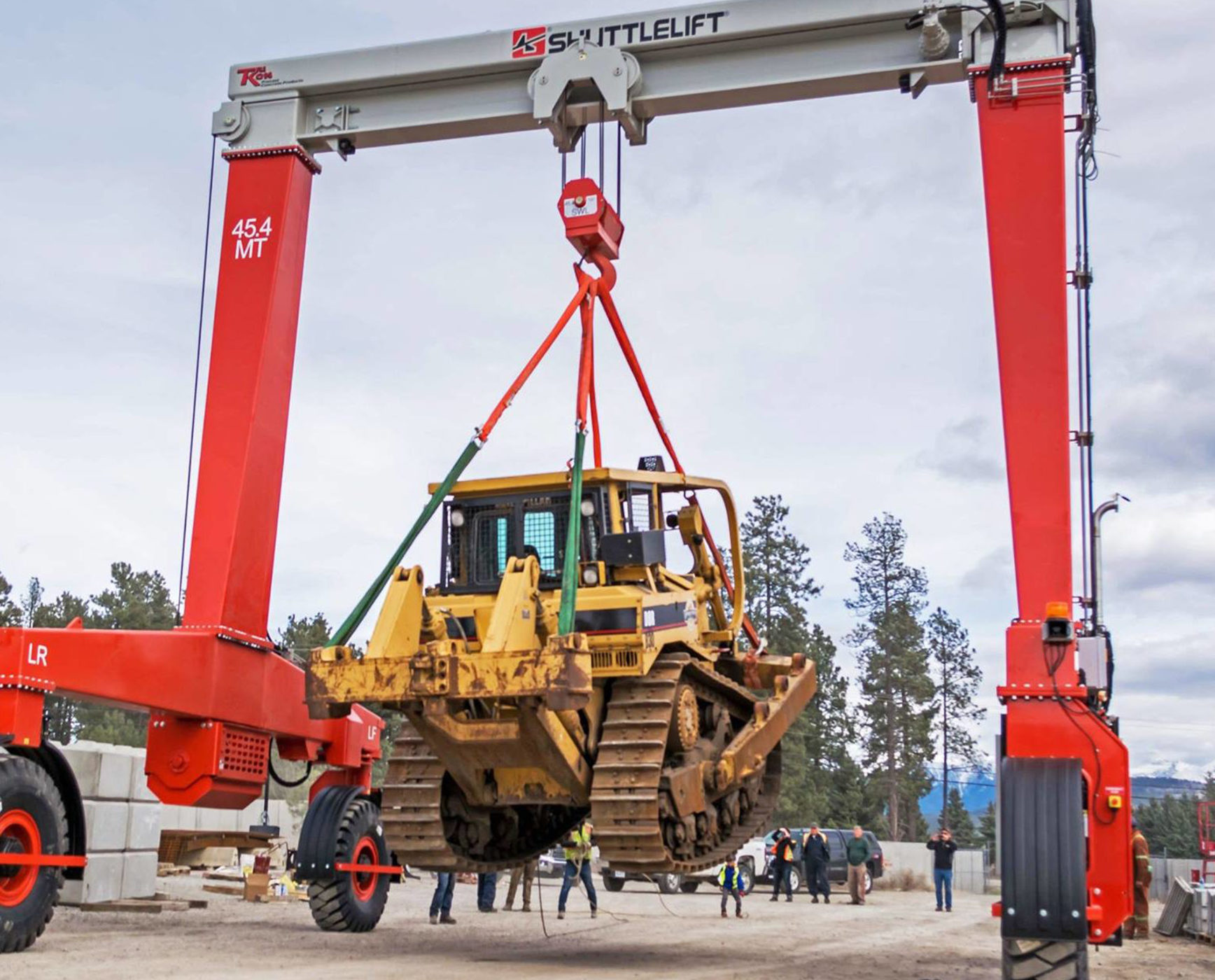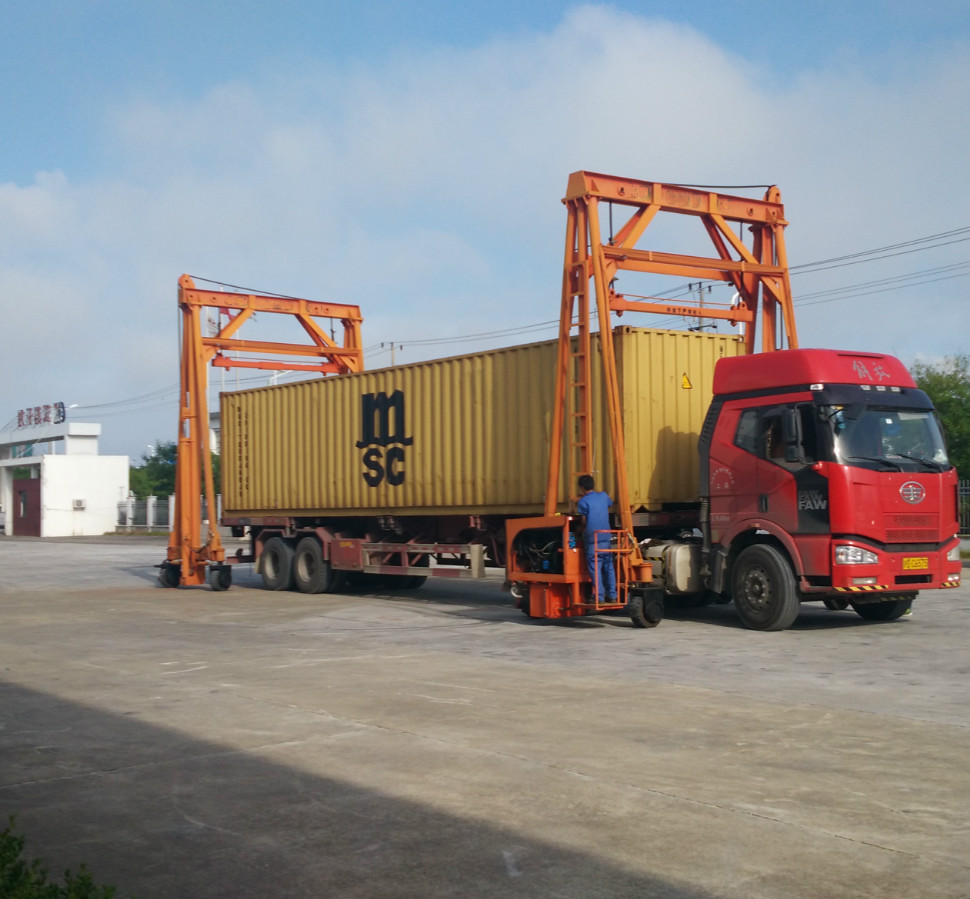

As container ship sizes and widths have increased throughout the 20th Century, ship-to-shore gantry cranes and the implementation of ship-to-shore gantry cranes has become more unique in order to effectively load and unload vessels while maximizing profitability and minimizing time in port. Ship-to-shore gantry cranes are often used in pairs or teams of cranes in order to minimize the time required to load and unload vessels. This setup prevents longitudinal movement along the rails as well as prevents tipping of the crane due to uplift from high velocity winds.

Two angled arms are anchored at each end of each set of wheels. During hurricanes and other emergency shut down situations, tie down assemblies are used. This setup is designed to prevent lateral movement along the rails. Elevators which are located along vertical frame members are used to get crew up and down from the cabin.įor temporary storage options between vessel operations, one steel pin is inserted into anchorage arm dropped from each wheel set into a stow pin assembly. For container cranes, a spreader is attached to span the container and lock it safely in place during movement.Įncased setup with glass paneled flooring for operator to view the cargo being moved. Beams also have the ability to be raised for storage purposes.ĭevice which moves vertically to raise and lower cargo as well as horizontally along the boom's length. The waterside span is based on the size of ship that it can successfully load/unload. It spans from landside of the landside rail wheels to a length over the edge of the berth. They display signage describing restrictions, requirements and identifiers.Ī horizontal beam that runs transversely to the berth. The wheels are mounted to the bottom of the vertical frame/bracing system.Ī structurally designed system of beams assembled to support the boom, cabin, operating machinery, and the cargo being lifted. During any lateral movement, lights and sirens operate to ensure safety of the crew operating adjacent to the crane. The lateral movement is controlled by a cabin along the landside wheel. They operate along two rails (waterside and landside designations) spaced based on the size of crane to be used.Ī combination of two sets of typically ten rail wheels. Ship-to-shore gantry cranes are imposing, multi-story structures prominent at most container terminals, used to load intermodal containers on and off container ships. Further confusing the issue is that gantry cranes may also incorporate a movable beam-mounted hoist in addition to the entire structure being wheeled, and some overhead cranes are suspended from a freestanding gantry. By contrast, the supporting structure of an overhead crane is fixed in location, often in the form of the walls or ceiling of a building, to which is attached a movable hoist running overhead along a rail or beam (which may itself move). The distinction most often drawn between the two is that with gantry cranes, the entire structure (including gantry) is usually wheeled (often on rails). The terms gantry crane and overhead crane (or bridge crane) are often used interchangeably, as both types of crane straddle their workload. They are also called portal cranes, the "portal" being the empty space straddled by the gantry.

They can range from enormous "full" gantry cranes, capable of lifting some of the heaviest loads in the world, to small shop cranes, used for tasks such as lifting automobile engines out of vehicles.

Side-view of Super-PostPanamax portainer crane at the APM Terminal in the Port of RotterdamĪ gantry crane is a crane built atop a gantry, which is a structure used to straddle an object or workspace.


 0 kommentar(er)
0 kommentar(er)
